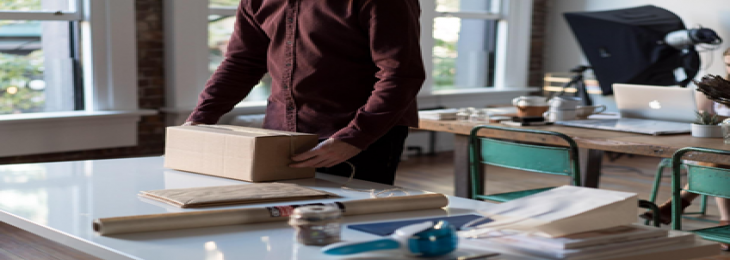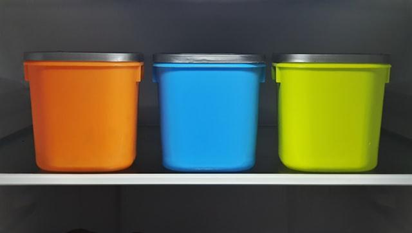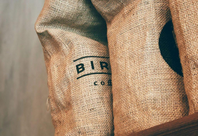
Lately, people have started paying a lot more attention to what they buy. They're worried about the environmental impacts of the products they pick to bring home. So, they're choosing with their wallets. It seems that ''Reduce, Reuse, Recycle'' is more important than ever before, and the trend is here to stay. Hence, it's clear that brands have to move towards sustainable options. But that's not an easy thing to do if you don't know in which direction you should go. We want to help you out, so we'll look at some of the key packaging trends in sustainable supply chains.
Now, everyone understands that customer behavior is important. At the end of the day, it's one of the factors that will shape the next stage of the e-commerce revolution. So, companies do need to go with it.
On the other hand, businesses can't send out all of their merchandise in paper bags either. Packaging still needs to be durable and protect goods. On top of that, it should stack and ship well and provide a pleasant brand experience. There are a lot of boxes to tick, but it can be done. And the best way to get there is by making less waste and reducing emissions.
Here are a few sustainable packaging trends you should know about.
Reusable packaging
Many big companies decided to try it out with reusable packaging. It's a principle that is conducive to a circular economy, so it should work out for everyone. However, this way of operating is still in its early phase. We don't have a guide on how to do it, but we have plans and ideas.
Some companies are streaming towards lightweight, durable containers that are rated for more than 200 uses. At the same time, other businesses are working on 100% returnable packaging and packaging made out of at least 50% recycled materials.
As things are now, companies are still searching for an ideal path to follow. But, things are moving in the right direction. If they weren't, we are sure that big names like Ikea and Amazon wouldn't be on board, but they are. And they have the ambition of being 100% circular by 2030. It's a big statement, but we sure hope they'll get there.

Small and durable plastic boxes may be one of the packaging trends in sustainable supply chains that will survive the test of time. We’ll also see more packaging companies create sustainable products for their customers. For example, Earthwise packaging already has a line of reusable screw-top containers.
Standard packaging
According to a 2020 study, standardized packaging and multimodal containers are the way to go if we want to get to more sustainable supply chains. Companies that choose this path are capitalizing on LTL (Less Than Load) shipping services. Independent movers are handling small local shipments, and that makes things easier and reduces costs. Here's how it all works.
It's a known fact that standard 20-foot and 40-foot containers are the most common way of transporting goods. So, if all the packaging, pallets, and containers work in concert, there'll be no wasted space. And this is true for all stages of transportation.
There's even talk about collapsible shipping containers and unit load devices. DHL is working on that, and they state that folding containers need 75% less space for storage and transportation. It's an idea that works and makes sense, so be sure to consider it.
Lighter packaging
This is one of the packaging trends in sustainable supply chains that brings us back to square one. And that's because it starts with an old question; What makes packaging more sustainable? As it turns out, the answer is in reducing weight and using less fuel. Luckily, these two are well connected.
When you have lighter packaging, you have lighter packages. And the less weight you need to transfer, the less fuel you'll use. So, more lightweight packages equal fewer greenhouse emissions. It's as simple as that.
Amazon says that they've reduced the weight of outbound packaging by more than 30% since 2015. However, their idea of lightweight packaging is plastic, which created a backlash they weren't hoping for. So, if this is a path you're considering, take it with care.

The lighter your packages are, the less fuel you'll need to transport them.
Minimal box fillers
Now we come to things that may seem like they have a low impact. And because of this, lots of companies choose to ignore them. However, as anyone interested in green living will tell you, that's a very wrong approach that will bring you nothing but negative points.
As a matter of fact, probably the easiest way to jump on the sustainability train is to think about strategic box design and choosing the right-sized boxes. Things like these will minimize the empty space, and therefore, the need for box fillers.
Of course, box fillers are important. They ensure that packages are shipped safely and resist damage. However, it seems that the time has come for plastic air pillows and blister packs to retire. Public awareness of waste is bigger than ever, and it's only going to rise. So, now may be the time to switch to nonplastic, recyclable, and natural fillers. Packaging paper works as well as plastic, and it will keep everyone happy.
On top of all, with less empty space in boxes, packages will become lighter and smaller in volume. So, you'll increase your volume efficiency in shipping, which is always a good thing.
Eco-friendly materials
We all know that plastic can be recycled. However, only certain types of plastic can be put to use again this way. And you guessed it, most of the plastic packaging isn't made from those. But that is bound to change. These days, we even see biodegradable pharmaceutical packaging. And if we can make that, we can do anything.
A plastic bottle, for instance, decomposes after 450 years. On the other hand, cardboard will do the same within two months. It's worth mentioning that many experts suggest that plastic never fully decomposes. Instead, it breaks down into microplastics that harm wildlife and even humans. So, recycling won't solve our waste problems, but it can help put them under our control.

More and more eco-friendly materials will be used for packaging in the future.
The good thing is that there are natural materials alternatives. Here are just some of them:
● Cornstarch
● Hemp plastic
● Soy protein plastic
● Mushrooms
● Seaweed
One of the biggest packaging trends in sustainable supply chains we see today is leaning toward these materials. As more and more companies join in, the prices will go down, and there will be no need to use plastic anymore. Or at least that's the plan.






